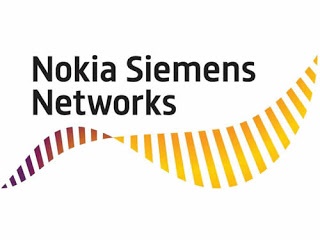As the burden on local mobile broadband networks continues to increase, with an ever growing number of users expecting higher speeds and demand for capacity more than doubling every year, global infrastructure provider Nokia Siemens Networks (NSN) is introducing new solutions that will help deliver services and content fluidly across a network and ease network congestion while bringing the focus of mobile networks on customer satisfaction. According to the company, the growing importance of mobility in both developed and emerging markets is driving a massive shift in mobile broadband. The global proliferation of smart end-devices and the increased adoption of cloud computing has made mobile broadband the key enabler of these usage patterns. Speaking during the launch of the new solutions, Nokia Siemens Networks Head of Sales for Africa Ranjith Cherickel noted that as the demand and adoption of mobile devices and services continues to grow in Kenya, the content and services that can be accessed on the move becomes the central value proposition of mobility, not the ability to merely connect to the Internet.
“This means that mobile network operators need to start moving to a model that supports connectivity which allows users to pay for what they consume and not necessarily how they consume it. This has a significant implication on current network resources and infrastructure, and also impacts on the established revenue streams of mobile network operators because, as demand grows, revenue per bit can fall,” he said.
However, Nokia Siemens Networks believes that with the right technology and network architecture mobile network operators can improve network resource efficiency, drive down opex and create a profitable business model. Its mobile broadband development activities are based on a view of the world where in 2020 1 Gigabyte of personalized data is delivered to consumers at a cost of about US1 dollar per day (#1GBperday$). To achieve this, Cherickel said greater end-to-end intelligence and real-time monitoring capabilities needed to be built into the network to efficiently deliver a superior broadband experience. The capabilities make the network continuously aware of user traffic demands, service needs and the resources available to serve those demands. This enables the network to recognise where demand is coming from and use traffic and content management to adapt itself to cater for traffic fluctuations.
Some of the products the company is introducing include the Liquid Radio WCDMA software suite which boosts performance of existing WCDMA networks. Building on the capabilities of Liquid Net, the advanced software combines three powerful and complementary features to deliver faster data uploads and extract the full benefit from network resources and smartphone capabilities. The feature set therefore helps operators improve customer satisfaction and cut churn while increasing revenue from greater 3G availability. According to Nokia Siemens Networks, another key aspect that is central to differentiation in a commoditised mobile broadband market is customer service. The CEM for Liquid Net provides insight into the experience of people using a mobile network and converts that into specific investment and network optimisation projects using the company’s Liquid Net software portfolio. “The approach extends traditional network and operational approaches by directly linking customer and revenue insights to improving network performance. This also helps operators to bridge the gap that sometimes exists between the network performance on record and service quality customers experience in reality,” Cherickel said.
The global infrastructure company has also launched a Service Operations and Management solution. The solution combines insights related to service performance with operations functions to manage mobile broadband services and tackle service degradation before subscribers experience poor quality. Together they help bridge the gap between network operations and service provisioning so that operators can provide subscribers with the best quality of service. Cherickel noted that final technological element that can help boost network efficiency in an effort to reduce opex and drive down broadband costs are small cell products and services. These packages offer the most profitable blend of macro and small cells to help operators expand their coverage in areas like the home or small office, allowing more capacity to flow through networks. This further boosts customer experience and provides mobile operators with the best return on investment.
He said that all the technologies being introduced will allow operators to optimise their investments in high-quality mobile broadband access, improve the customer’s experience at a lower cost. “This is the future of mobile broadband and operators need to start planning network upgrades along these lines if they wish to remain relevant in the next three to five years. There is little doubt that the mobile broadband usage paradigm is shifting in a market that is now, more than ever, driven by end-user demand. And what end-users are demanding is access to low cost mobile broadband that will allow them to benefit from all the promise and functionality that true mobility offers,” Cherickel said.

